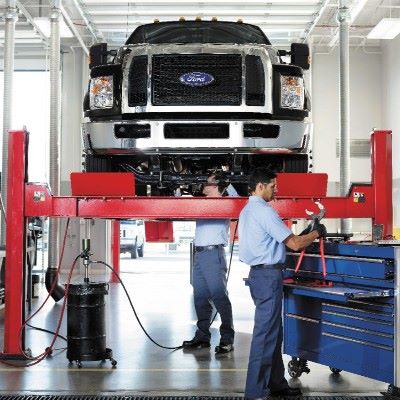Ford Vehicle Service Information In Penticton BC
How to Maintain Your Drivetrain Components in Penticton, BC
Tags:
(Posted on Sep 1, 2021 at 01:18AM )
Is an Automatic Transmission Better than a CVT in BC, Canada?
Tags:
(Posted on Jun 27, 2021 at 09:00PM )
What are the Advantages of Remote Keyless Entry in BC, Canada?
Tags:
(Posted on Jun 26, 2021 at 08:00PM )



![<a href="https://clients.webstager.com/skahaford.com/inventory/#/?&orderBy=5&asc=1&t=0&filter=[New%2CFORD%2CEcoSport%2C%2C%2C%2C%2C%2C%2C%2C%2C%2C%2C%2C%2C%2C%2C%2C%2C%2C%2C]"><img src="/images/upload/August_2021/ford_ecoboost_turbo.png"alt="a 2021 Ford EcoSport driving on a road with a city in the background"/></a>](https://clients.webstager.com/skahaford.com/images/upload/August_2021/ford_ecoboost_turbo.png)
![<a href="https://clients.webstager.com/skahaford.com/inventory/#/?&orderBy=5&asc=1&t=0&filter=[New%2CFORD%2CExplorer%2C%2C%2C%2C%2C%2C%2C%2C%2C%2C%2C%2C%2C%2C%2C%2C%2C%2C%2C]"><img src="/images/upload/July_2021/ford_explorer_suspension.jpeg"alt="closeup of passenger side wheels of a white Ford Explorer parked on a dirt trail"/></a>](https://clients.webstager.com/skahaford.com/images/upload/July_2021/ford_explorer_suspension.jpeg)
![<a href="https://clients.webstager.com/skahaford.com/inventory/#/?&orderBy=5&asc=1&t=0&filter=[New%2CFORD%2C%2C%2C%2C%2C%2C%2C%2C%2C%2C%2C%2C%2C%2C%2C%2C%2C%2C%2C%2C]"><img src="/images/upload/July_2021/bc_canada_brakes_ford_explorer.jpeg"alt="A white Ford Explorer parked on a dirt road"/></a>](https://clients.webstager.com/skahaford.com/images/upload/July_2021/bc_canada_brakes_ford_explorer.jpeg)
![<a href="https://clients.webstager.com/skahaford.com/inventory/#/?&orderBy=5&asc=1&t=0&filter=[New%2CFORD%2CEscape%2C%2C%2C%2C%2C%2C%2C%2C%2C%2C%2C%2C%2C%2C%2C%2C%2C%2C%2C]"><img src="/images/upload/July_2021/ford_escape_windshield.jpeg"alt="Windshield of a blue Ford Escape driving down a street"/></a>](https://clients.webstager.com/skahaford.com/images/upload/July_2021/ford_escape_windshield.jpeg)
![<a href="https://clients.webstager.com/skahaford.com/inventory/#/?&orderBy=5&asc=1&t=0&filter=[New%2CFORD%2CEdge%2C%2C%2C%2C%2C%2C%2C%2C%2C%2C%2C%2C%2C%2C%2C%2C%2C%2C%2C]"><img src="/images/upload/June_2021/ford_edge_shifter_automatic_transmission.jpg"alt="Closeup of an automatic transmission rotary dial shifter on a Ford Edge"/></a>](https://clients.webstager.com/skahaford.com/images/upload/June_2021/ford_edge_shifter_automatic_transmission.jpg)
![<a href="https://clients.webstager.com/skahaford.com/inventory/#/?&orderBy=5&asc=1&t=0&filter=[New%2CFORD%2CEscape%2C%2C%2C%2C%2C%2C%2C%2C%2C%2C%2C%2C%2C%2C%2C%2C%2C%2C%2C]"><img src="/images/upload/June_2021/Ford_Escape_Keyless_Entry.jpg"alt="Two people with a rolled up carpet using the hands-free liftgate on the 2021 Ford Escape with a warehouse in the background"/></a>](https://clients.webstager.com/skahaford.com/images/upload/June_2021/Ford_Escape_Keyless_Entry.jpg)
![<a href="https://clients.webstager.com/skahaford.com/inventory/#/?&orderBy=5&asc=1&t=0&filter=[New%2CFORD%2CExpedition%20Max%2C%2C%2C%2C%2C%2C%2C%2C%2C%2C%2C%2C%2C%2C%2C%2C%2C%2C%2C]"><img src="/images/upload/June_2021/Ford_expedition_wheels.jpg"alt="The front half of a Blue Ford Expedition parked on a beach with water in the background"/></a>](https://clients.webstager.com/skahaford.com/images/upload/June_2021/Ford_expedition_wheels.jpg)
![<a href="https://clients.webstager.com/skahaford.com/inventory/#/?&orderBy=5&asc=1&t=0&filter=[New%2CFORD%2C%2C%2C%2C%2C%2C%2C%2C%2C%2C%2C%2C%2C%2C%2C%2C%2C%2C%2C%2C]"><img src="/images/upload/June_2021/Ford_Bronco_Wheel_alignment.jpg"alt="Closeup of Ford Bronco wheels driving over a rock with a mountain and gravel road in the background"/></a>](https://clients.webstager.com/skahaford.com/images/upload/June_2021/Ford_Bronco_Wheel_alignment.jpg)




